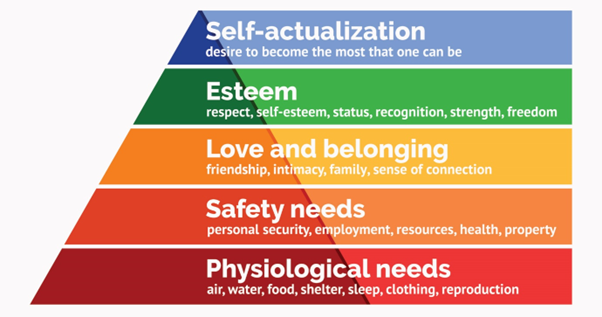
Maslow facts

Why is Maslow important?
Maslow did not come up with the pyramid! I had no idea until I looked at this recently so I started looking at different ways to represent needs.

Questions
How do the diagrams differ from one another? Why do you think people have adapted his ideas? Which do you think is the most useful/ best representation? I have been left after writing this blog with more understanding of Maslow's Hierarchy and have found myself finding out more about the Siksika Nation. Hope you have found it interesting too. Further Reading/ Exploration Kaufman, SB (2020) Transcend: The New Science of Self-Actualization. Tarcher Perigee. https://www.psychologytoday.com/gb/blog/the-clarity/202106/using-maslows-hierarchy-needs-discover-what-motivates-you https://www.psychologytoday.com/gb/blog/positively-media/201111/social-networks-what-maslow-misses-0 Rutledge https://youtu.be/CF2c1q_OvdE An introduction to Maslow's Hierarchy of needs - Abraham Maslow by Counselling Tutor https://youtu.be/aRzejkbeH5s Rethinking Maslow's Hierarchy of Needs https://gatherfor.medium.com/maslow-got-it-wrong-ae45d6217a8c Could the Blackfoot Wisdom that Inspired Maslow Guide Us Now? By Teju Ravilochan (contributing editors: Vidya Ravilochan and Colette Kessler)
0 Comments
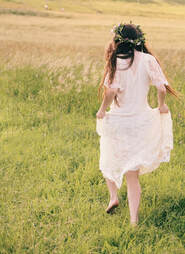 I am not good at the dentist and during the first two years of COVID I had not managed to go so it was even harder to return. It was a new dentist as well because I had moved and inevitably at the check-up, she said that I needed work done. I talk a lot about anxiety with my clients and we look at ways to breathe. I think I have a handle on my anxiety but this trip to the dentist has reminded me how untrue this is. My thorough knowledge of polyvagal theory and flight, fright, and freeze, was not going to be any help here! By the time the dentist came to the waiting room she found me shaking and unable to stand, with all my efforts going into not hyper-ventilating. I am sure part of her thought there was no way she was going to be able to do the filling. I had to reach far down inside to get in the chair. My strategy was to count backwards in sevens, and I decided to go from 500; in hindsight 1000 would have been better! Do you know what? It worked, much to my surprise. Concentrating on breathing is awful when your mouth is open, visualising nice places is near impossible but counting back in sevens kept my brain away from the anxiety. I do think I went wrong a few times though, but I just kept going. What works for me might not work for you so let’s have a look at some different ways. You may want to look up grounding techniques on the internet for others. It is all about the breathing at the end of the day, although I had a client once who said, “I don’t do breathing so don’t talk about it”!! The breathing that helps calm your nervous system is sometimes called belly breathing and the important part is to breathe out first; there is no point trying to take a deep breath in if there’s no room in your lungs! There are lots of belly breathing videos on YouTube. Laughing is also good for grounding so I suggest Elmo’s belly breathing song. Belly breathing is also part of all the following ideas, consciously or unconsciously. You can find people explaining some of the one’s I have given titles on YouTube
Which of these work, or if any of them do, is dependent on who is doing them. If you have experienced trauma, I suggest going gently and listening to your body. If a way of grounding makes you sad or uncomfortable, don’t do it. Obviously, there are some that work better in certain situations than others; for example, belly breathing and counting backwards are less noticeable that dancing and singing to your favourite songs. Please do get in touch if you have found other things work or if you find this blog helpful: I’ll be the one in her bare feet in the grass.. I am not a poet, but I write poetry. I love the freedom of creation and the fact that I write it just for me. My first poem (well that I can remember) was written about police dogs in class 2C so when I was 10. I wrote it because I did not like writing. It was twenty words long! It didn’t rhyme and it didn’t have a noticeable rhythm; this is true of all my poetry since. Nobody was more surprised than me when it was published in our class newsletter!! My next memorable piece of poetry was in year 10 or 11 or, as we used to refer to them, 4th or 5th form. I was really pleased with it and still remember part of it:
Thoughts always come to me Like a train coming into a station And then just as suddenly They disappear from sight My English teacher, who I idolised, chose to criticise it by questioning whether thoughts disappeared suddenly, so I packed up all my ideas and dreams and all my unwritten poems in a suitcase labelled ‘misunderstood’ Reading poetry is another story. I used to love all the nursery rhymes and the way my dad read A.A. Milne’s poems about cracks in the pavement, butter on my bread, and James James Morrison Morrison Weatherby George Dupree. I can still feel the way my dad’s voice caressed the pages of the well-worn books. I even learned, by heart, the poem ‘Halfway down the Stairs, is a place where I sit…’ Then I reached my teens and refused to do English Lit. at school because of all the memorising and my nursery rhymes were relegated to the suitcase too. I have written a journal from when I was 17; it used to be ‘what I did today’ and then in my twenties I allowed myself to write when I wanted to, and it slowly began to fly free and include unfinished ideas and poems. I rediscovered the way words weave across the world and embrace my soul. I started to express and process feelings through the words I was writing, just for me. Recently I have started exploring the power of poetry in my counselling and supervising. Reading poetry aloud to other counsellors or sharing poetry with clients has opened my eyes to how poetry can cut through our defences and help us share experience. I explored Glenis Redmond’s ‘praise poetry’ workshop https://www.hmhco.com/blog/how-to-write-a-praise-poem and loved writing a praise poem of my own: I am topaz searching stars at the edge of the horizon, Pushing at boundaries of the past Expanding into infinity. I come from unique brilliance Masquerading as dull dust; A wren disguising a kingfisher. A blink of blue, A shimmer of light, Aquamarine, sapphire and silver. I exist at the periphery of understanding, Firefly dancing on moonbeams In the last light of evening Not quite connected to Earth, Love oxygenating my soul, I hear your story I am not a poet, but I write poetry. I can’t rhyme and my rhythm is my own. I have opened my suitcase of ‘misunderstood’ and am learning how to cherish the contents. What about you? Sometimes, people who are grieving trust me enough to say that they can feel the person’s presence with them. These feelings are often called grief or post-bereavement hallucinations, but I prefer to call them sensory grief experiences since to the person who sees, hears, smells, or feels them they are very real rather than a hallucination. These experiences can include seeing the dead person, or feeling them touch you, smelling their scent or feeling a coldness in a particular room. These experiences are a normal part of grief but are often hidden because people don’t talk about them and are worried that people will think they are going mad. I think they are incredibly common and are part of a healing process for most people who have them.
It might be a fleeting moment, for example as someone was shopping, he ‘saw’ his mother behind him in the shop window for about a minute and could not move away. He said it felt as if he was Harry Potter looking in the Mirror of Erised to see himself with his parents. For other people, the grief experience can last up to half an hour and can become a commonplace occurrence. Some people have sensory grief experiences shortly after the death and see them as part of the shock and denial phase of grieving, but other people can still have them years later. One person I met had occasional times when they happened, normally associated with a particular smell of cologne; forty years after his death, she talked about ‘meeting’ her dad and him putting his hand on her shoulder in a reassuring way. One time, someone trusted me enough to have this experience in front of me. They could obviously ‘feel’ their mother hugging them and this experience brought them a deep sense of peace and reassurance in their grief. Afterwards we talked about it, and they said that they had been worried about saying it to anyone because their grief seemed so unusual; they didn’t believe in ghosts and thought people would think they were crazy. However, some people really want to have these sensory grief experiences and don’t; this can be very distressing but does not have any correlation with the closeness of the relationship. One person talked about going on holiday with her daughter who had a sensory grief experience where she ‘saw’ her dead father. She had tried to have a similar experience because she was in the room at the time but had felt nothing. We talked about the feelings of jealousy and inadequacy she felt because she had not had this experience. The person found herself ‘hunting’ for the release she felt this experience would bring and wondered about going to a spiritualist. Once we talked about the fact that although they are common, not everyone has them and they cannot be planned, she found a new sense of peace and restoration. She realised that it was not about how much her husband loved her. Each person’s grief is unique. Some people never talk about sensory grief experiences which doesn’t mean that they haven’t had them. Other people talk about ghosts or their belief system. My hope is that people start to be more open about their sensory grief experiences and that they become more recognised. |
AuthorMy name is Caroline and I am a counsellor based in North Devon. Archives
May 2022
Categories |
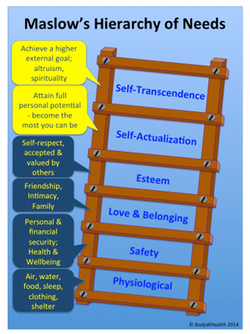

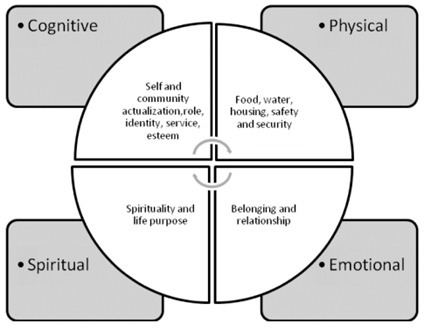
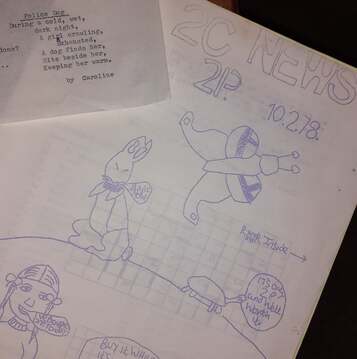
 RSS Feed
RSS Feed
